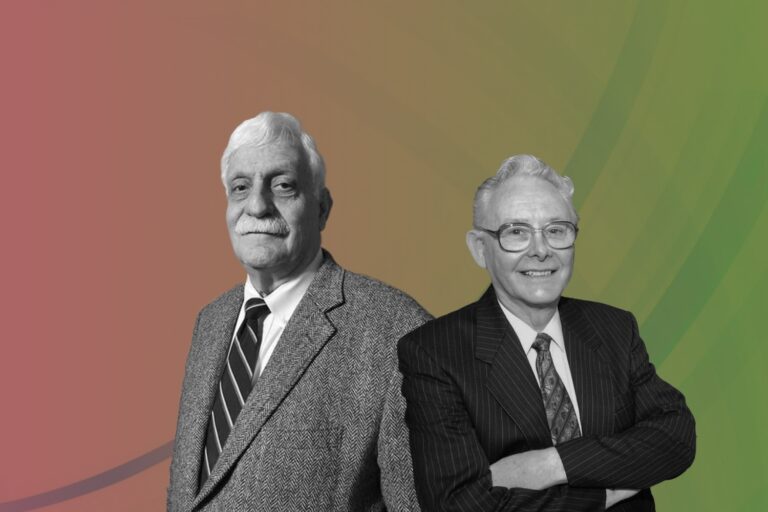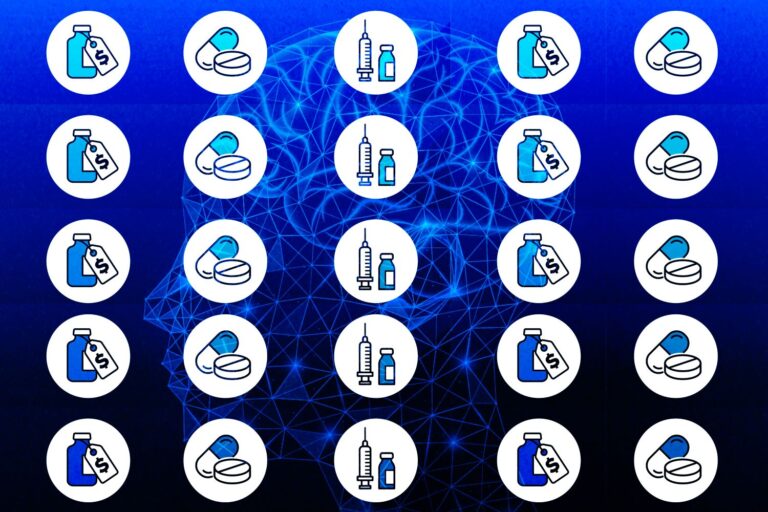HealthJoy: How “The Siri of Healthcare” Takes Itself to the New Height
Launched in 2014, this Chicago-based startup has attracted $53 million in funding from investors Health Velocity Capital, U.S. Venture Partners, Chicago Ventures, Epic Ventures, Brandon Cruz, and Clint Jones. The company was awarded the title of 2019 Best Tech Startup at Tech in Motion’s annual Timmy Awards ceremony, and its CEO and Co-founder Justin Holland was also named to Crain’s Chicago’s “40 Under 40” at the time.
Those consecutive successes sound really impressive but the way to get there required a lot of effort to change and grow every day. Let’s see what we can learn from Holland and his team along their journey!
How the Story Went
Like most startup projects, the initial idea of HealthJoy came up from a problem that the entrepreneur accidentally encountered. In 2013, Americans were preparing to sign up for health insurance through Affordable Care Act exchanges for the first time. Coming off a ski injury, Holland needed an affordable MRI service that wouldn’t break the bank and he couldn’t believe how difficult his search turned out to be. Since he hadn’t reached the deductible on his individual plan yet, Holland needed to pay for the scan out-of-pocket.
“Researching MRI pricing took me down a rabbit hole of the incredibly complex and non-transparent world of healthcare pricing,” Holland said. “At the end of several days of work, I found that two nearly identical MRIs could vary in cost from $500 to $5,000. That pricing disparity in itself seemed like a big problem worth solving.”
The HealthJoy story begins in 2014. Along with a high school friend Doug Morse-Schindler, Holland founded HealthJoy, a new startup that pinned its future on the landmark healthcare law, which is often called Obamacare. The company was born in Chicago’s River North neighborhood and those first days were not easy. In a rented house, the office was on the floor next to the kitchen and the co-founders living above.
At that time when millions of people were gaining health insurance through the law, Morse-Schindler and Holland were sure that those people would need help navigatingtheir new plans, which often required patients to pay thousands of dollars for procedures and prescriptions. The earliest versions of HealthJoy were designed to guide individuals through selecting, using, and making the most of the plans.

As a serial entrepreneur, before moving to Chicago and co-founding the startup with Morse-Schindler, Holland launched and sold two ad-tech companies which were OpenInstall and FreeCause.
“Ad tech is not a mission-driven industry,” he says. “It’s different being able to come into work every day and, ultimately, our company’s future and growth depend on how much we help people. That’s an easy thing to get behind.”
The truth is health care startups are hard and it’s very easy to give up on them. Holland’s “view of how things should be” in the world sets him apart from other entrepreneurs in the industry. “Having that characteristic helps him a lot in that environment.”, says Brandon Cruz, president of GoHealth.
From Obamacare to the Corporate Sector
Using a combination of artificial intelligence, machine learning, and data mining, the company served 60,000 members with hundreds of different individual ACA insurance plans in all 50 states in 2015. After successfully proving their engagement strategy and ability to contain costs for tens of thousands of individuals, the tables suddenly turned. Health insurers had been losing money in the new market for years and began to pull out – leaving HealthJoy on unstable ground.
In 2016, HealthJoy’s innovative solution caught the eye of the corporate sector as companies began to see the value in simplifying the employee benefits experience. So it entered into the employee benefits market. The company distributes its platform to HR teams across the country through benefit advisors, third-party administrators, and health plans to help employers address the costs and complexity of health benefits.

It was clear that pivoting to the employer healthcare space would allow the company to bring bigger change to the benefits experience while continuing to scale. They launched the company for groups in 2017 and haven’t looked back. Health startups like HealthJoy are being drawn to the much more stable market for employer-provided health insurance, navigating an ever-shifting, often turbulent US health market.
Not every idea is a good idea. For entrepreneurs in particular, sometimes pivoting away from a strategy that isn’t quite working is an important yet tough part of the journey in discovering what works best for the business.
Grit Is One of the Most Vital Values to Embrace
Before discovering a market fit for HealthJoy, the co-founders needed to craft a vision for the future of the company. However, sometimes a vision has to change in order for a business to be successful. What started as a direct-to-consumer business eventually transitioned into a SaaS-based enterprise. Morse-Schindler said fortitude through change was how he and his team reached success.
According to Morse-Schindler, key contributors to success are identifying a segment of the market where the product fits well and building a scalable go-to-market strategy. Once the company had conviction in those two areas, it would be able to invest more heavily in sales and marketing spend to fuel growth. However, hypergrowth also meant that hiring the best talent and being operationally excellent became much more important.
“Grit is one of the most vital values to embrace before finding product-market fit” was an important lesson learned. Things will go wrong sometimes and you need to make sure your co-founder and executive team can row through the mud with you.
“Don’t fall in love with ideas or concepts. Be willing to walk away from something you put your sweat and tears into when the data is telling you that’s the right decision. Write down your mission, vision, and values as early as possible, as they should be your primary framework of selling and evaluating the culture fit for new hires.” says Morse-Schindler.
Navigation – the Next Big Thing in Digital Health
The U.S. healthcare system is so messed up that a whole industry has been created to help navigate it. Studies have found that only 12 percent of people have sufficient literacy to navigate the system, and even those individuals can struggle when they’re feeling sick and vulnerable. As a result, more and more employers are paying for dedicated health advocates or navigation tools. Navigation is seen as a “re-entry point” into the healthcare system, which is the future of digital health, or maybe it’s already been on route to becoming a commodity.
While most of the navigation tools on the market today are targeted to the large self-insured employers, HealthJoy is catering to the mid-market as an SMB-centric navigator, where it can see a lot of potential for growth. Among various types of navigation tools like Verticalized, Embedded, Advocacy, etc., the company is categorized as a General one, offering the broadest set of capabilities and is the largest segment. However, it would need to accommodate customers with more personalization as the market evolves.

At the end of the day, there’s an existential question: If healthcare were less complicated with meaningful government reform and it should be, would navigation tools cease to disappear?
In Holland’s opinion, even in the best health care systems in the world, patients could use the extra help. It’s a vulnerable time and there will still be myriad questions: “Am I getting the best care possible?” or “Am I doing the right thing by a loved one?”. So in his view, there’s always going to be a need for navigation.
3P&1T Formula for Customer Success
Customer Success (CS) is an emerging field within the technology industry and can vary from one company to another. At HealthJoy, a CS Manager wears many hats, ranging from guiding a client through implementation, ensuring clients see the value and rely on the platform once a client’s instance goes live, and serving in a cross-functional role. Since 2018 when the CS team has grown to 9 people, they have worked closely with the 33-person technology team, which covers development, implementation, product design, and product.
“We were not going to scale successfully by offering a client experience on the backs of people working too hard in an unsustainable environment,” says the Director of CS, Sarina Asher. “Knowing this, we scaled by focusing on our people, processes, product, and tools.”
#1. The People

When it comes to recruitment, HealthJoy tends to evaluate candidates’ soft skills as well as how they can make use of their past experiences. “I came from a very non-traditional background, so I understand a career pivot. I’m thankful for the recruiter who took a chance on me and understood the value I could add to my first tech role,” Asher says. For this reason, she is more focused on candidates with top-notch client acumen, strategic thinking, project management skills, or a passion for health technology instead of a linear CS background.
The company has a 30/60/90 day plan to adequately train and prepare all new hires for their roles, focusing on the industry, the product, then the process. For instance, in the first 30 days, a new CS team member learns about the healthcare landscape and benefits industry. Within the next 60 days, employees get to know the product in and out and join live sales pitches for a full understanding. Finally, they learn the internal processes and tools, then practice by taking on their own accounts. This in-depth training ensures that employees are equipped for success on the team.
The takeaway here is that to establish a deep and knowledgeable bench, startups should consider nontraditional backgrounds. Building an onboarding process to help new hires rampup the most quickly while being educated about the industry they’re in, especially a complicated one like healthcare, is also a necessity.
#2. The Processes
To grow more efficiently, the company has to keep codifying its processes. In 2018, processes and actions were running smoothly, but the startup was so new that there wasn’t much process written down. “We spent the better part of quarters three and four documenting what we were doing, as imperfect as it might have been, in an Excel spreadsheet. From there, we were able to evaluate what low-hanging fruit we were able to scale,” Asher says.
After checking off the low-hanging fruit and starting small, the company has scaled by segmenting clients into enterprise-level and small-business bucket, each with different needs. “Our largest clients might have robust corporate communications teams and multiple benefits points of contact, whereas our small group clients love us because we are taking that work off their backs,” Asher says. To serve both buckets more effectively, Customer Success Specialists was born to solely focus on small-business clients.
Even though it feels like a waste of time, it’s important for startups to constantly assess what activities they’re repeating to design a system to prevent repetitive actions. Maybe there are some areas where the company could build efficiency while producing the same or even better results. Building tools and processes are going to pay off in the long run.

#3. The Product
Through conversations with clients, Asher discovered that the HealthJoy Dashboard, which provides program administrators a hub to implement the program, along with access to reporting and marketing resources, was frequently referenced by program champions. After recognizing the importance of the Dashboard, the company could unlock its full potential and take advantage of HR’s desire to visualize program outcomes, leading to further improvement of the product.
“We focused the roadmap this quarter and last quarter on this Dashboard space, making it more self-service, more usable, and more robust for our HR leaders,” Asher says.
The new implementations have transformed the experience both for the clients and for her team, there are fewer back-and-forth emails between HR and the CSMs, and an overall more efficient and high-quality implementation experience. Product, engineering, and CS need to operate in concert. Besides, the departments should respect each other, and have built a system for communication, feedback, and closing loops.
#4. The Tools
Sarina and her CS team take note of the activities that are repeated over and over to impact customers positively. After identifying repetitive emails or phone calls, they plan to use an out-of-the-box product like Gainsight to maximize efficiency. Gainsight is a product that brings together all of the data collected on customer health so that the CS team can easily action for their clients and further scale operations.
“For example, if we get a positive review, we would be able to use the software to automate the process of sending an email out to our client. The software would auto-generate a message from the team to notify our program champion of this rave review and invite them to come to view their outcomes on our dashboard,” Asher says. “That will allow us to affect more clients in a more strategic and impactful way than we currently can with manual, time-consuming processes. In the future, we can reserve a CSM’s time for meaningful conversations and strategy.”
Her advice for early-stage companies without the current resources for software is to take stock of the actions you are performing over and over again. Buy or build is a constant struggle. If software exists that’ll help you operate your business more effectively and better serve clients, it’s worth spending time on.
“I want folks at HealthJoy who are creative, and when they see something that can be done better, they do it, test it out, and report back. While consistency is important for certain processes in CS, sometimes it’s not to our benefit if we all do things the same way,” Asher says. “In a startup, we don’t work in an environment where there is one right way to do things. As we continue to scale, I hope to encourage my team to try new processes to create positive change.”

COVID-19 outbreak is dramatically changing the way we use healthcare and how the employees are embracing healthcare benefit programs focused on virtual and online services. Understanding the exceptional pressure that all business and HR leaders are experiencing at this time, HealthJoy has planned and executed a continuity plan offering many new policies with the same speed, quality, and access.
“We’re ready to help members, whether that means directing them toward medical help or just easing their fears,” Holland said. “This step is a natural extension of our mission to guide our members to affordable, high-quality healthcare and our vision of removing the complexity from being healthy.”
The Bottom Lines
HealthJoy’s journey from the tough early days to today’s success reveals the importance of focusing on key contributors, embracing changes for growth, and bringing a variety of perspectives to the table. With that in mind, every startup would stand a chance to innovate, solve problems, and build the future of benefits together.









